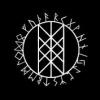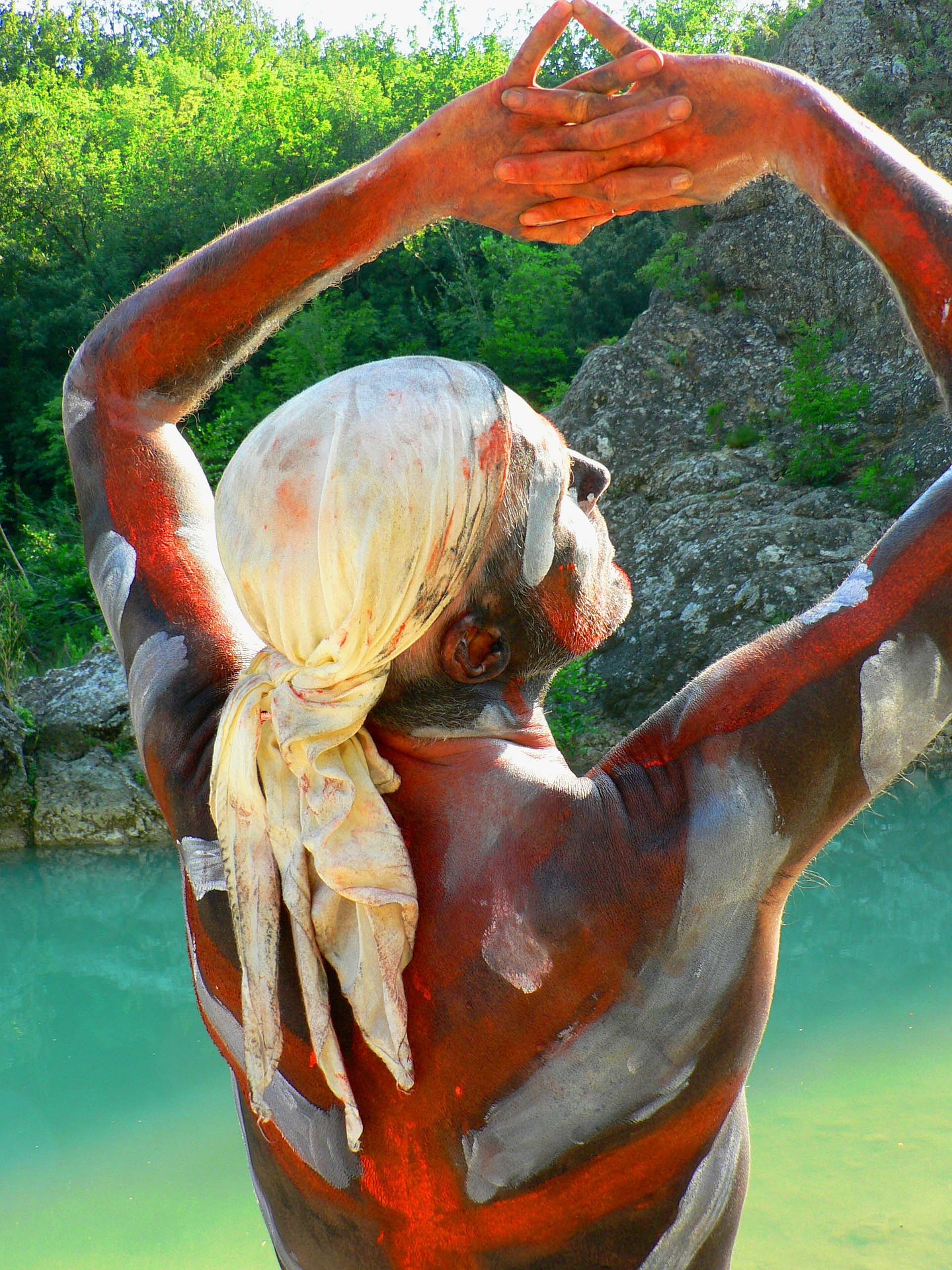 Submitted by Wyrd on
Submitted by Wyrd on

by Steve Parfitt
Tantra is not so much a religion, by which I mean a set of dogmas and doctrines, as a fundamental operation of human consciousness that seeks to express itself in all religion and cultures. It may be obfuscated, denied, repressed, reviled, concealed or otherwise wished away, particularly in body-fearing, patriarchal cultures, but it continues to surface in different guises in all cultures. When I learned the story of Taliesin, used as the principal teaching instrument of at least one modern school of Druidry, I was struck by the Tantric nature of the story and its symbolism. Only the final part of the story did not seem to fit exactly but when I learned of the Eighty Four Mahasiddhas the final similarity was revealed.
For those not familiar with the story of Taliesin I offer a précis here. Those who are can skip the following five paragraphs and continue reading from the one after.
The Goddess Ceridwen has two children, one a beautiful daughter, the other an ugly son. She decides that her son, deprived of worldly advantages, should have spiritual riches and arranges at some considerable trouble to herself for a magical potion to be brewed over the course of a year and a day. This potion will bestow enlightenment on Her son, Afagddu, when he drinks just three drops of it. The remainder of this magical soup is actually harmful – the Baleful Brew. The brewing is supervised by an old, blind man, Morda, and a young boy called Gwion Bach or Little Innocent. On the night before the process is completed Ceridwen arrives to await the final moment and to take the mere three drops required to enlighten her son. However, Gwion throws the last handful of herbs into the cauldron and three drops splash onto his thumb. Instinctively he sucks them from his scalded thumb and is instantly illuminated. The Goddess is furious that her son has been deprived of the three drops needed and descends on Gwion who takes flight and, with his newfound powers, shapeshifts into a hare in order to expedite his escape.
Not to be thwarted however, Ceridwen shapeshifts into a greyhound and continues the pursuit. Gwion jumps into a stream and becomes a fish, Ceridwen follows and becomes an otter. Gwion jumps out of the water and becomes a bird only to be followed by Ceridwen becoming a hawk. Finally Gwion spies a pile of winnowed grain and dives into it while converting into a grain himself. He thinks that he is well hidden but Ceridwen becomes a hen and pecks her way through the grain eventually managing to swallow Gwion.
Miraculously, Ceridwen becomes pregnant with Gwion and vows to kill the child on the instant that he is born. However when the moment arrives she is so moved by his beauty that she is unable to do so but instead sews him into a leather bag which she casts into the sea.
This bag is retrieved at a salmon weir by a hitherto hapless young man called Elffin who, on opening the bag and seeing Gwion, declares “Behold! A Radiant Brow”.
And so Taliesin acquired his name, for Taliesin means Radiant Brow.
Elffin adopts the child and his worldly fortunes instantly take a turn for the better, acquiring wealth and happiness, until he antagonises King Maelgwn and is imprisoned as a result. He is rescued by Taliesin who performs some spectacular magical feats by means of his singing.
The story can be understood on several levels (also typical of Tantric texts) but here I shall consider that all the characters are emblematic of energies manifesting in a single psyche i.e. all the action is taking place in the consciousness of a single individual, up to the point where the enlightened Taliesin is released from the leather bag and becomes active in the world.
The story begins with a sense of incompleteness; of the need to develop in order to overcome some sense of unease and alienation. The child Afagddu, meaning utter darkness, symbolises the state of unawareness that is the starting point of the spiritual quest and this unawareness leads to an ugliness of character, called klesha or afflictions in Tantra, that is represented as physical ugliness in the story.
The innate urge to develop oneself spiritually and seek happiness, recognised in humanistic psychology as the actualising tendency, is the initial manifestation of the Goddess energy seeking the recipe for the magical brew. This effort has already had a transformative effect – Afagddu is now Gwion and his watchfulness of the brew is the practice of meditation and mindfulness that is necessary for the development of the self awareness required for progress to spiritual accomplishment. A point emphasised by the presence of the old, blind man – vision is no longer directed to outer phenomena but to inner processes and this leads to wisdom, symbolised by age.
Anybody who has made a concerted and consistent effort to follow the Buddha’s instructions for mindfulness, a practice known as Mahamudra in Tantra, will appreciate the symbolism of a year and a day of back-breaking effort and drudgery in collecting the firewood and watching over the cauldron to ensure that the contents do not spill or boil over.
Gwion’s instinctive reaction in sucking his thumb when it is scalded by the three drops of the magical brew from the cauldron (imagery that is positively pregnant with meaning from a Tantric viewpoint) indicates that what follows is a natural consequence of his preceding efforts. And what a result! In Tantric terms the Kundalini Shakti has been awakened and is proceeding through the chakras. As each chakra is associated with a particular element the chase over land, through water and air and finally the sun-fostered grain being subjected to the fire of digestion and metabolism is a journey through the elements as well as the chakras.
Ceridwen is unable to kill the child as she had planned because she is so moved by his beauty. We see that the physical ugliness of Afagddu, symbolising ignobility of character has become physical beauty, symbolising nobility, in Gwion transformed by his meditative effort and journey through the chakras and elements. Highly accomplished practitioners of Buddhist insight meditation are known as Arahants, meaning Noble Ones.
There is, however, still the element of Spirit or Ether to be negotiated and this is symbolised by his isolation from the world of matter and everyday experience in the leather bag. This retreat from the world is exemplified by the Tibetan Tantric practice of the three year retreat during which practitioners are instructed in the most profound teachings and expected to practise them intensely. Sometimes, as with Gwion, the practitioner is alone for most of the time.
Having thus opened the throat chakra Taliesin returns to the world. The symbolism of being discovered by a hapless young man matches the Tantric view of the world being characterised by suffering and dissatisfaction and how spiritual practice is to be anchored in the body and the world of ordinary experience to bear real fruit. The action of opening the bag lets in the light, literally enlightening Gwion. The brow chakra has been opened and Gwion is now named Taliesin, literally “Radiant Brow”.
The journey has been from utter darkness through mindfulness, meditation and conscious manipulation of bodily energy to the Radiant Light of Pure Consciousness.
As I mentioned above, I could not equate the final part of the story with anything Tantric until I discovered the legends of the eighty four mahasiddhas. Mahasiddha is a Sanskrit word meaning “Great Adept.” The Mahasiddhas are drawn from all walks of life and all social strata, four of them are women and many others received instruction and initiation from women. They are characterised by their freedom from society’s restrictive norms. This freedom is not a self conscious rebellion against the repressive rules of society, which comprises another form of enslavement, but a spontaneous expression of their true being, free of all calculation and self consciousness, because it arises from a state ontologically prior to the construction of the self concept. Their way of expressing this freedom, freeing and instructing others, as well as performing feats of magic, is through song. Probably the best known of these songs is The Royal Song of Saraha.
Superficially the two songs appear to be quite different and to have different motivations. Saraha’s approach is direct; attempting to liberate individuals from their self-inflicted delusion and suffering by describing the way to Liberation and the pitfalls on that way (though some knowledge of lesser known yogic practice is necessary to understand everything he says. Osho’s commentary is helpful in this respect) Taliesin’s more cryptic utterances have as their superficial goal the freeing of Elffin from Maelgwn’s prison. Elffin is there as a result of the deceit, falsehood, calumny and jealousy of the people in Maelgwn’s court. Elffin can be seen as pure consciousness and the iniquitous courtiers the kleshas, or afflictions, that obscure it and lead us to imprison our true nature behind a conceptualised view of self and the world. Elffin is Everyman, you and me struggling in this world of suffering. From this viewpoint, Taliesin’s mission is identical to Saraha’s: both have trod the path to enlightenment themselves and both become active in helping others on that path.
Other examples outside the Mahasiddhas reveal that the liberated consciousness is wont to express itself in verse, the Buddha for example, who, quite rightly, has a reputation for meticulous analysis and detailed expositions of his teaching, also expressed himself in spontaneous verse, as recorded in the section of the Buddhist Canon called the Udana.
The difference between Druidry and Wicca on the one hand and Tantra on the other seems to be one of emphasis rather than content. The former concentrating more on external natural phenomena and the latter on the body and internal processes, the two paths converging on to the same point.
It is fortunate that we have two strands of Tantra - Hindu and Buddhist - that have not been subject to mutilation at the hands of a repressive and hostile dogma and have thus survived intact to the present day. This allows those that Kevin Saunders has called “Modern Progressive Pagans” freedom to enrich their Pagan lifestyle by incorporating Tantric practices into their Pagan celebrations, rituals and meditations, changing the symbolism to suit the needs and tastes of the practitioners.
Read more @ https://www.druidry.org/druid-way/other-paths/druidry-dharma/tantra-and-taliesin
- 664 reads